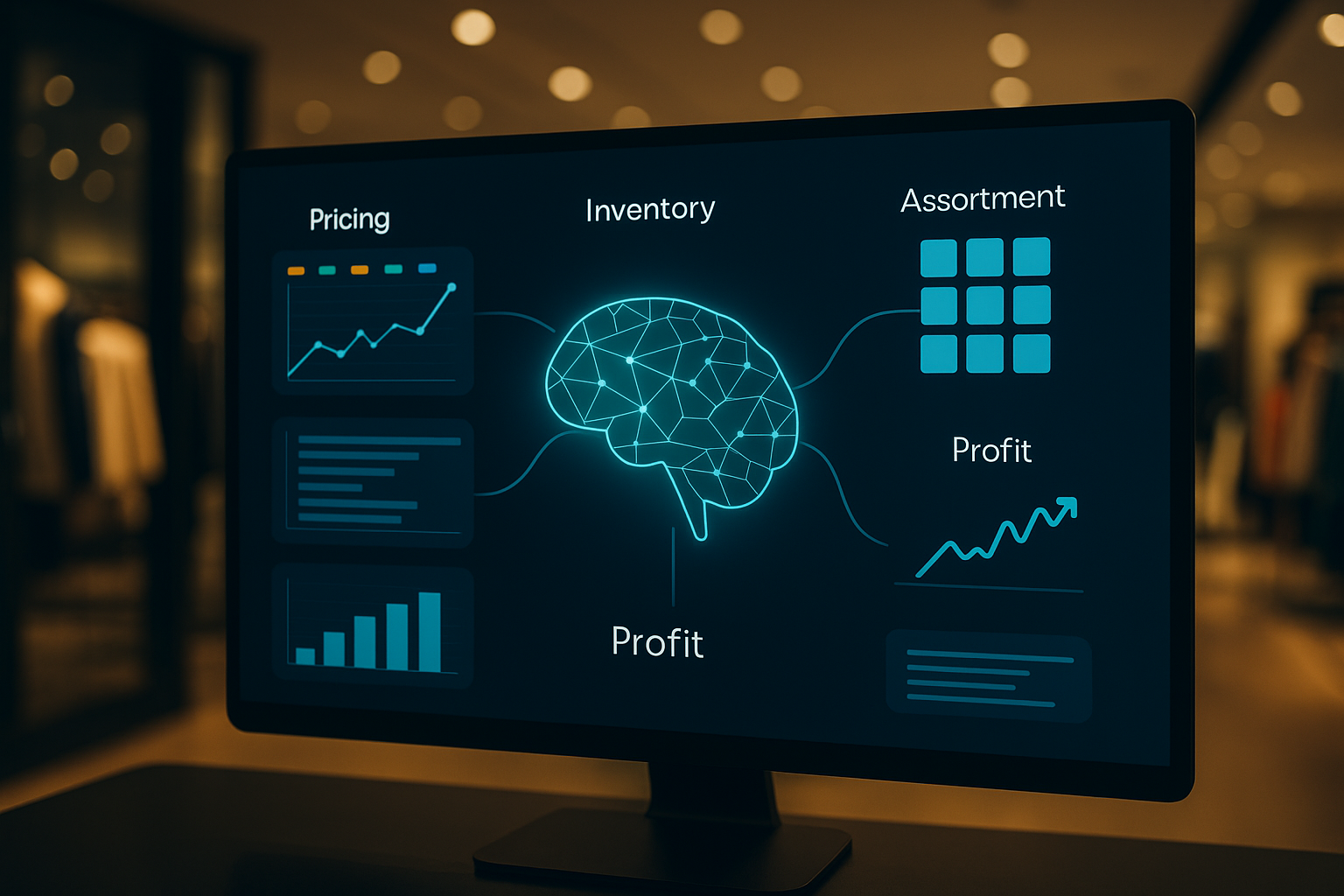Real-World Agentic AI Examples in Retail Optimization
See how agentic AI transforms retail by turning data into real actions. Learn how teams use AI to improve pricing, assortment, and inventory decisions in 2025.

In retail, we tend to think that insight is everything. But is it? You could have an entire database filled with customer and competitor insights. But if that data isn’t translating into actual sales, it’s as good as oil still buried underground. It’s not going to get you anywhere.
It turns out that acting on insights is what really matters. And in 2025 and beyond, acting fast is the real difference maker.
One of the shifts we see more often now than ever is agentic AI being used not just for analysis, but for driving real workflow change. In this post, we’ll show you how that plays out in real settings, what kinds of wins people are getting as a result, and how those lessons might apply to your business as you try to beat the competition and win the buy box.
Pricing Moves: Dynamic Adjustments for Margin and Volume
It’s tempting to treat all AI in retail as either abstract and futuristic or basic and text-based. But the truth is that teams are using agentic AI right now to solve concrete problems. Inventory that lags beyond need, price gaps between you and your competitors, over-assortment, missed promos… there’s a long, long list of verticals being transformed thanks to agentic AI.
Pricing is a domain where agentic AI is showing up most often. We see it with clients turning raw price data into retail pricing strategy decisions where before they were using static charts.
One brand we’ve worked with used live competitor monitoring to catch when rivals dropped prices. Instead of blindly following the trends, they ran micro-tests in select stores or online channels to see customer reactions. The system recommended small adjustments, the team acted on them, the results were tracked. But most importantly, the next set of recommendations got even better.
In another case, a retailer used agentic AI to moderate pricing shifts across regions and categories. Instead of doing a blanket price cut, the system flagged where margin was at risk or where market conditions allowed a lift. That way, they avoided “race to the bottom” pricing in areas that didn’t need cuts.
These examples show that pricing doesn’t have to be high stakes. When used well, agentic AI lets teams run safe experiments and act confidently with a view of all the trade-offs.
Assortment, Whitespace, and Product Matching
Sometimes the most overlooked opportunity is what you don’t carry. Agentic AI is helping retailers find those gaps (we call them “whitespace”) and improve assortment decisions with more clarity.
Because our system includes a product matching capability (looking at visuals, specs, function, and price), it can find equivalences between items across retailers. That means you spot parallel SKUs your competition offers that you don’t currently offer. You can see where your assortment is weak.
In practice, a retailer might detect that a competitor is pushing a variant you never stocked. The agent flags that missing piece, then suggests adding or testing a version for yourself. Meanwhile, it predicts your profits and shows which existing SKUs are underperforming and might need to get swapped out.
This combo of product matching plus whitespace analysis gives teams actionable insight instead of a big messy bucket of ideas.
What Makes Success Possible
Looking across these cases, a few patterns emerge about what works and what can trip you up.
1. A tight feedback loop
The teams that get good results treat the system not as an ongoing loop rather than a one-time rollout. It can make a recommendation, then act, observe, feed results back and get better suggestions the next time. Agentic AI is strongest when it learns from your actions. Without this step, you become detached from what’s real in your business and your agentic AI is just for show.
2. Control remains with humans
Just to be clear, we’re not talking about “set it and forget it” systems. In all the cases above, people reviewed, tweaked, and approved the actions that were ultimately taken. AI proposes options based on data, but the humans decide. It’s exciting to try and market AI tools that take humans out of the equation completely, but that kind of guardrail builds trust.
If your team feels decisions are forced or slipped through without human oversight, adoption is going to be slow and full of friction.
3. Start with a slice, scale out
We’ve found that retailers who try to activate every function on day-one tend to stall out. Instead, start with one focus. Maybe it’s pricing in one region, or planning for one category. Get a few good wins.
Use those results to bring more teams on board.
4. Data quality matters, but don’t wait forever
Some folks think you need perfect data before you start. That’s not necessary. You just need reliable feeds like sales, inventory and competitor pricing. But you don’t need every edge case solved. Get the core working and let the system refine with feedback.
5. Alignment on goals and guardrails
If your strategy team, pricing team, and inventory team define “success” differently, the AI system is absolutely going to struggle. Company leaders have to give clear goals and agree on specific limits (say, no more than a 10% price swing).
Thinking about Agentic AI for Your Retail Team
If you’ve read this far, you might be wondering whether these kinds of wins can actually scale with your business. The good news is that based on what we’ve seen with customers of all sizes, the answer is yes. But that doesn’t mean it’s automatically right for you.
Here are a few ways to test whether it’s a fit:
- Do you often face trade-offs between inventory, margin, and promotions that are hard to balance manually?
- Are you overwhelmed by reports and spreadsheets just to spot opportunities?
- Do you have cross-functional tension (pricing vs inventory vs assortment) where the cost of poor decisions is real?
- Could a few high-impact moves 1-2 times a week do more for you than a dozen small tweaks?
If your answer is yes, then picking a domain like pricing or planning to try out agentic AI may give you solid proof. Then, if you get a few small victories, that momentum can carry you forward.
Agentic AI in retail isn’t some cure-all, techno-futuristic saving grace. It doesn’t replace human judgment, creativity or domain experience. But it can help you bring clarity to complexity and give your team the power to move with more confidence. But the real power shows up when you transition from AI making suggestions to it being part of your regular decision cycle.
In those real moments when a competitor cuts price midweek or inventory backs up in one region, you’re going to want a system that doesn’t just show charts, but tells you “Here are three moves you can try, with numbers behind them.” That’s what great agentic AI does in practice, and it’s what we do at Profitmind.
Contact us now if you want to learn more.
See why Profitmind's retail AI technology pays for itself in the first month
Discover More

Real-World Agentic AI Examples in Retail Optimization
See how agentic AI transforms retail by turning data into real actions. Learn how teams use AI to improve pricing, assortment, and inventory decisions in 2025.

Why Agentic AI Is the Next Leap in Retail Decision-Making
Discover how agentic AI helps retailers turn data into clear, profitable actions. Learn how intelligent agents improve pricing, assortment, and inventory decisions.

Retail AI Agents Coordinating Category-Level Growth
See how coordinated retail AI agents align pricing, promotions, and inventory to drive category-level growth and sustainable profits with Profitmind.


